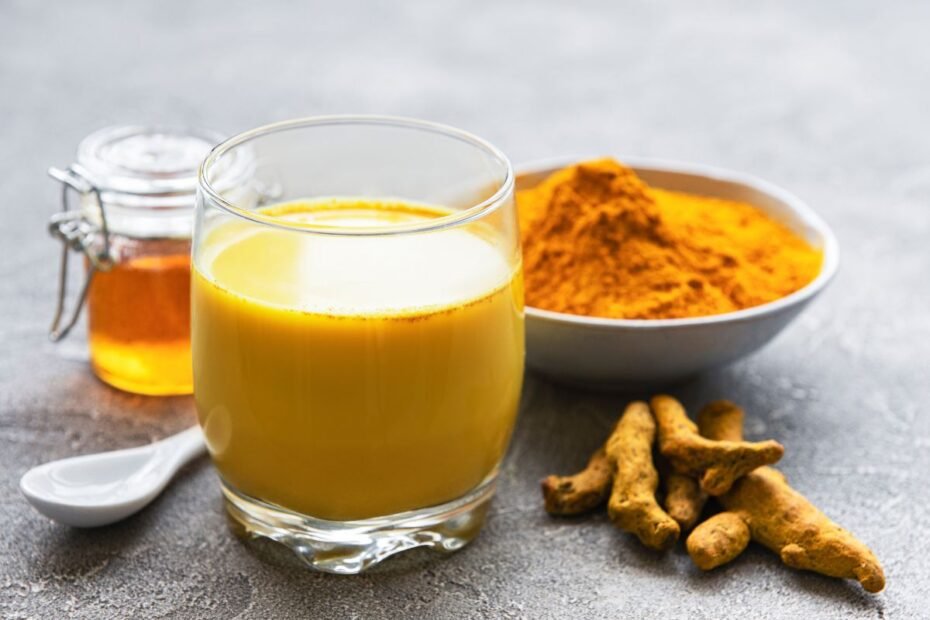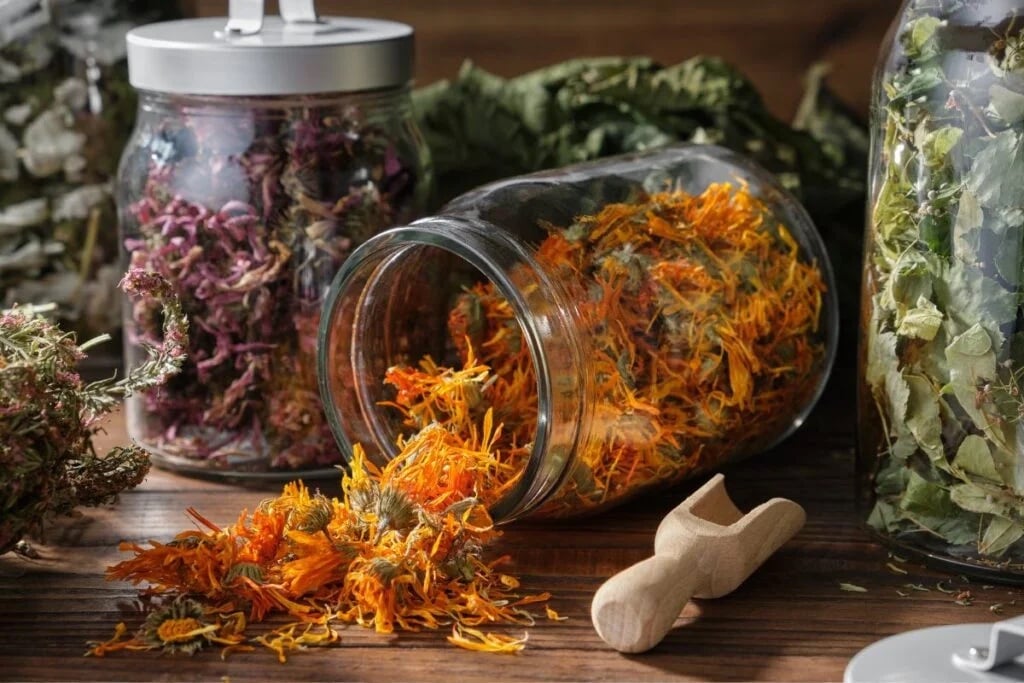Turmeric is relative to ginger but not inferior to its healing potential. Turmeric is a spice most commonly used in cooking, and making various drinks. The simplest drink is turmeric tea. Turmeric can be added to other drinks and teas as well. Let’s check the incredible turmeric tea benefits.
Turmeric: What Is It?
Turmeric is a perennial herbaceous plant with approximately 80 species in the genus. A variety of turmeric is found in Southeast Asia, mainly in India. Here, turmeric has already become part of the cultural identity. In particular, Ayurveda (India’s traditional medicine) has used turmeric for thousands of years. This plant is a part of certain religious and cultural rituals. In India, turmeric is also one of the main spices and a key ingredient in curry spices. Curcuma longa (syn. Curcuma domestic) is the most widely known and cultivated turmeric species.
Turmeric is a heat-loving tropical plant. They grow to about 1 meter tall and have large, oblong, bright green leaves. They produce yellow tubular flowers clustered at the top of the stem. The most valuable part of turmeric is the tuber. They have the appearance of the root of ginger but are a brighter orange color.
Turmeric is more commonly grown as an ornamental houseplant in many countries. It is possible to grow home-grown tubers with the right conditions and patience. However, turmeric tubers, or the powder, are most often brought to the home from supermarkets.
Benefits of Turmeric
The principal and most valuable component of turmeric is the curcumin. It is a proactive antioxidant with anti-inflammatory capabilities. It is also used as a preservative and natural food coloring agent. In addition, turmeric tubers contain vitamins C and B and minerals such as phosphorus, iodine, iron, and calcium.
The health benefits of turmeric are based on millennia of Eastern medical tradition. Modern scientists also explore the benefits of turmeric tea. Thus, many of the benefits have already been scientifically proven. We can identify several areas that are favorably affected by turmeric:
- Turmeric improves immunity, fights viruses and cold bacteria, and prevents the body from becoming “sick.”
- It helps with arthritis, suppresses inflammation, and relieves symptoms.
- This spice reduces the risk of oxidative damage to cells, reducing the risk of cell mutations and cancer.
- It has tumor growth-limiting and cancer cell growth-inhibiting effects. Scientists are already investigating the use of curcumin in combination with chemotherapy and radiotherapy for complex cancer treatment.
- It regulates the digestive system, appetite, and fat accumulation. The spice maintains a healthy intestinal microflora.
- Turmeric helps to reduce blood cholesterol and the risk of cardiovascular disease.
- This root combats degenerative processes in the brain and helps prevent neurodegeneration in old age.
- The spice treats skin lesions, helping the skin to remain healthy and youthful.
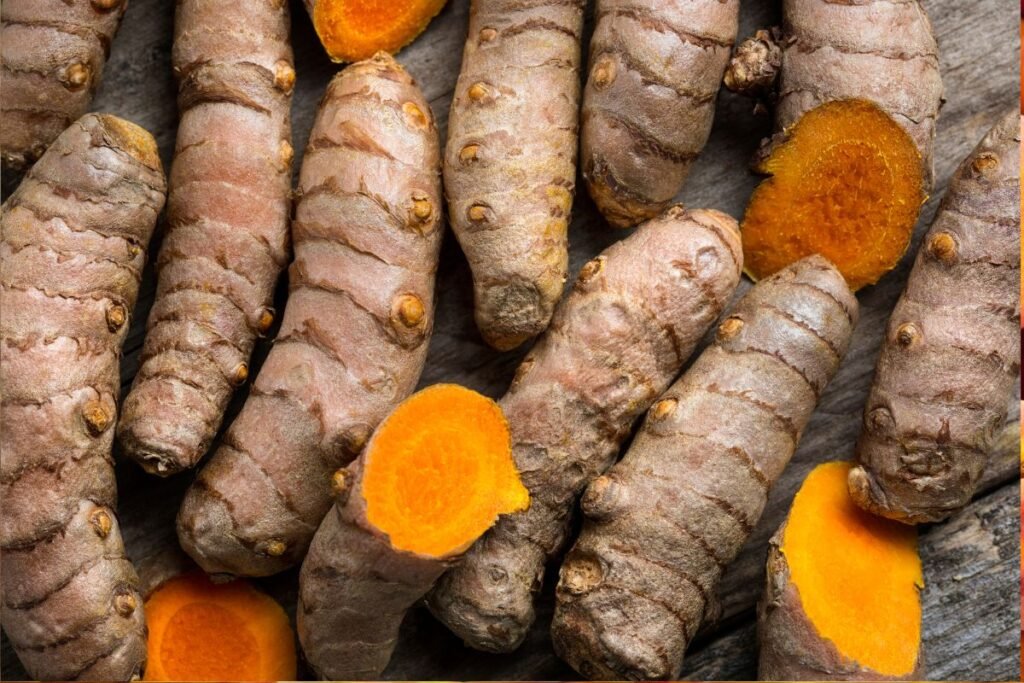
Turmeric Use and Possible Side Effects
People prepare turmeric tubers in various ways for both food and health purposes. You can use: freshly grated turmeric root; store-bought or homemade turmeric powder; or ready-made turmeric tea mixes. The highest-value product comes from fresh turmeric root.
Studies involving adults have confirmed a safe limit between 4000 and 8000 mg of curcumin daily. Studies have also confirmed that the time of day turmeric is consumed does not affect its effectiveness.
Although turmeric is safe to consume, like any other product, it can have side effects in some people. In rare cases, excessive turmeric can cause diarrhea, rashes, nausea, and headaches. Also, there is still too little research on whether higher amounts of turmeric are safe during pregnancy and lactation.
Turmeric Tea Benefits Health
Daily drinking of turmeric tea can help maintain overall health and prevent diseases. You may flavor this tea with a variety of additives. Depending on the desired flavor or improving turmeric effect, this tea can be made with coconut oil, ghee, black pepper, lemon, lime, ginger, cardamom, cinnamon, nutmeg, basil, anise, vanilla, maple syrup, etc. Let’s try to mix turmeric powder with traditional loose-leaf, black, or green tea. Here are a couple of variations on how to prepare this tea.
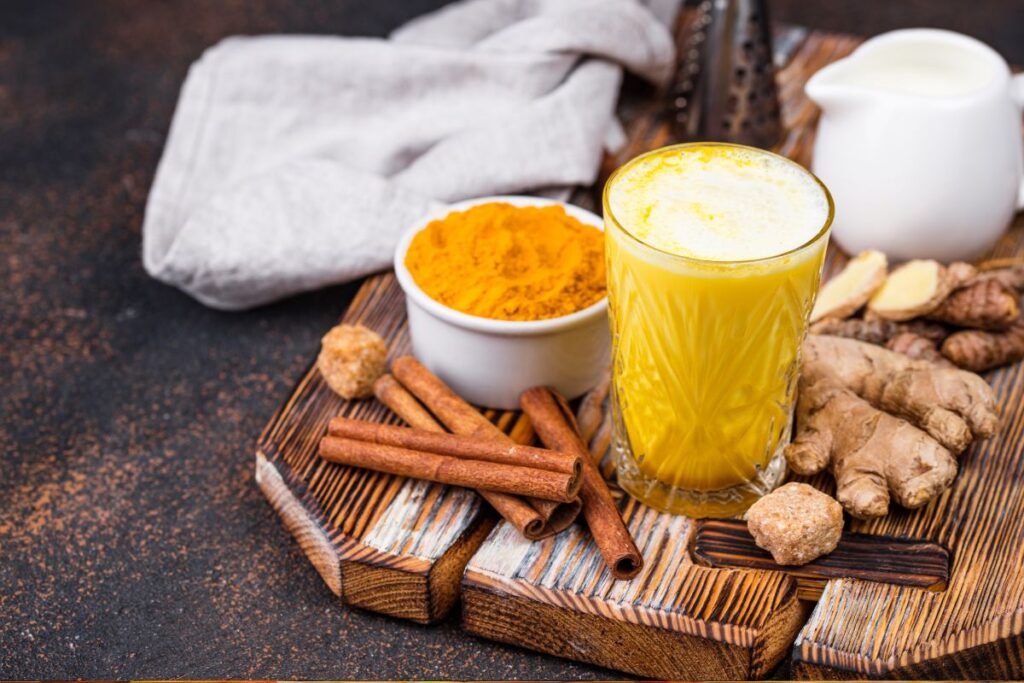
Cinnamon, Black Pepper, and Turmeric Tea
Ingredients:
- 1 cup of water or milk (for example, plant-based)
- a teaspoon of turmeric
- 1 teaspoon of cinnamon
- one teaspoon of honey
- 1 teaspoon of black pepper
Add all the ingredients to boiling water or milk, and heat for 15 minutes. Strain the tea (but not necessary), cool it slightly, and enjoy.
Cinnamon and Turmeric Tea
Ingredients:
- ½ teaspoon turmeric
- 1 teaspoon cinnamon
- milk (can be plant-based) to taste
- 500 mL of water
- 1 teaspoon honey
Dissolve the turmeric and cinnamon in the boiling water, add the milk, and heat for 5-10 minutes. When the tea has cooled slightly, add the honey. Add lemon as an additional flavoring.
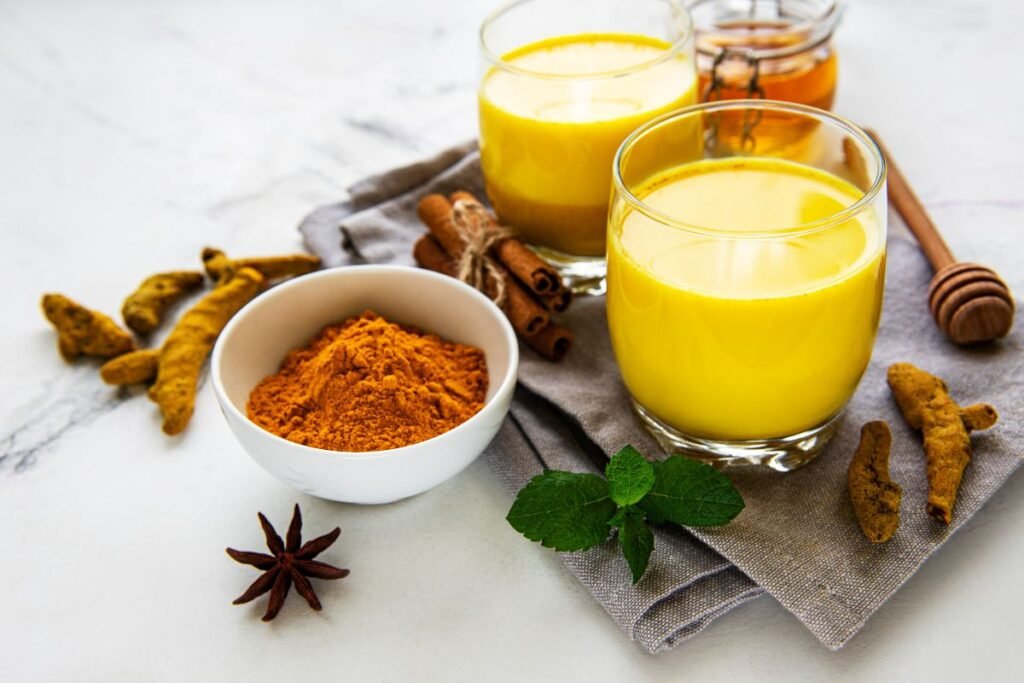
The Recipes and Benefits of Turmeric Tea for Colds
The treatment of colds traditionally starts with tea. One of the most effective for colds is turmeric tea. Here are some options for making an effective drink to relieve cold symptoms.
Plant-Based Milk and Turmeric Tea
Ingredients:
- 1 cup of coconut or almond milk
- 1/4 cup water
- 1 teaspoon of turmeric
- ¼ teaspoon vanilla
- a pinch of cardamom, cinnamon, and cloves
Mix all the ingredients and heat over low heat for about 1 minute. Drink the tea warm.
Turmeric and Ginger Tea Benefits
This turmeric tea, complemented by the beneficial properties of ginger, will provide your body with more healing powers to help boost immunity, both as a preventive measure and in case of cold symptoms.
Ingredients:
Place all the ingredients in a tea-making bowl, cover with hot water, and leave for 15 minutes. Drink this infusion while it is warm.
Milk and Turmeric Drink
Ingredients:
- a glass of cow’s milk
- 1 teaspoon of turmeric.
Add the turmeric to the warmed milk, stir, and drink.
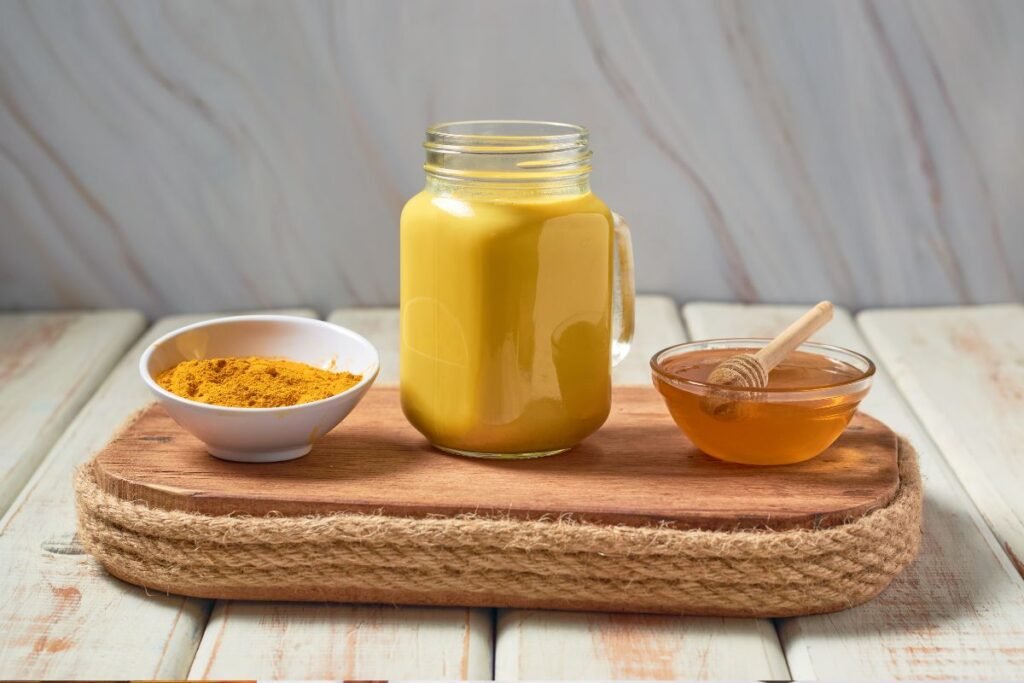
Kefir with Turmeric for Improved Digestion
Frequent use of turmeric in the diet balances the digestive system. The various ways of using turmeric already mentioned are suitable for this. However, another way to treat indigestion is by drinking kefir (a fermented milk product) with turmeric.
Ingredients:
- a glass of kefir
- 1 teaspoon of turmeric
Add the turmeric to the kefir, stir, and drink. Add and flavor the drink with a pinch of black pepper.
Turmeric Tea Benefits for Skin Beauty and Health
The antioxidant and anti-inflammatory properties of curcumin in turmeric help heal skin wounds, acne, and scars. Antioxidants are also known to be essential for maintaining healthy and youthful skin. Cosmetic products with turmeric are suitable for brightening, moisturizing, and cleansing the skin. You can make these effective remedies at home. Here are some suggestions below.
Turmeric Face Mask: to Revitalize, Brighten, and Lighten Pigment Spots
Ingredients:
- 1 tbsp natural Greek yogurt
- 2 teaspoons of honey
- 1 teaspoon turmeric
Mix all the ingredients until you get thick and smooth mass, and apply the mask evenly to the skin. Leave the mask on for 15 minutes and rinse off with warm water.
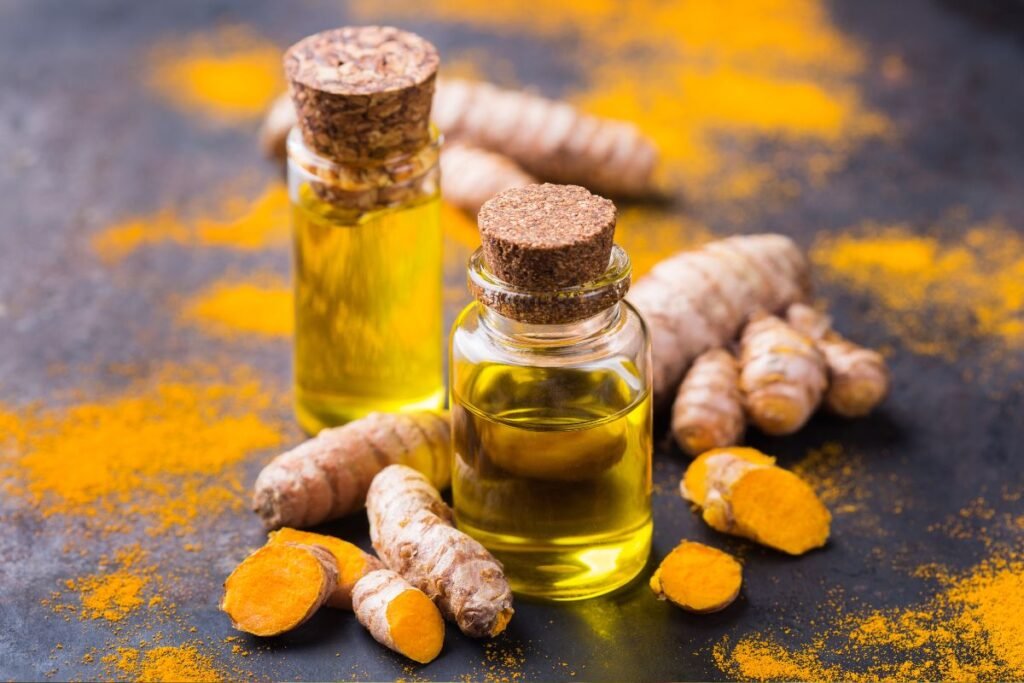
Turmeric Oil for The Face
Ingredients:
- 2-3 drops of turmeric essential oil
- 3 tbsp olive oil
Mix turmeric essential oil with olive oil. Store the mixture in an airtight glass jar in a dark and cool place. Apply this oil to the face every evening. Massage it into the skin and leave it overnight.
Turmeric Mask for Moisturizing The Face
Ingredients:
- 1 tablespoon of turmeric powder
- one tablespoon of sandalwood powder
- 1 teaspoon honey
- water (as required)
Mix sandalwood and powder in a bowl, don’t forget to add honey. Then, pour the water and stir until the mixture becomes thick and smooth. Apply the mask to the skin and keep it on for 15 minutes, wash it off with warm water. After the treatment, moisturize the face with a regular face cream.
Turmeric Mask for The Treatment of Acne, Wounds, and Scars
Ingredients:
- milk (as required)
- one tablespoon of turmeric powder
- 1 tbsp chickpea flour
Mix the turmeric powder and chickpea flour in a bowl. Then, gradually pour in the milk and mix until smooth and thick. Distribute the mask smoothly over the face, leave it on for 15 minutes, and rinse with warm water.
Before Using Turmeric
Before using turmeric remedies, it is essential to check for allergic reactions. The first step is to test the product on the hand’s skin. Apply to a small area and leave it on for at least a day. It is safe to use turmeric products if there are no disorders such as redness, swelling, or irritation. Turmeric masks should be washed off thoroughly, as their residue can leave yellow traces on the skin.
Sources:
- https://www.medicalnewstoday.com/articles/319638
- https://www.healthline.com/health/turmeric-for-skin
- https://skinkraft.com/blogs/articles/benefits-of-turmeric-for-glowing-skin
Associative photos from © Canva.
